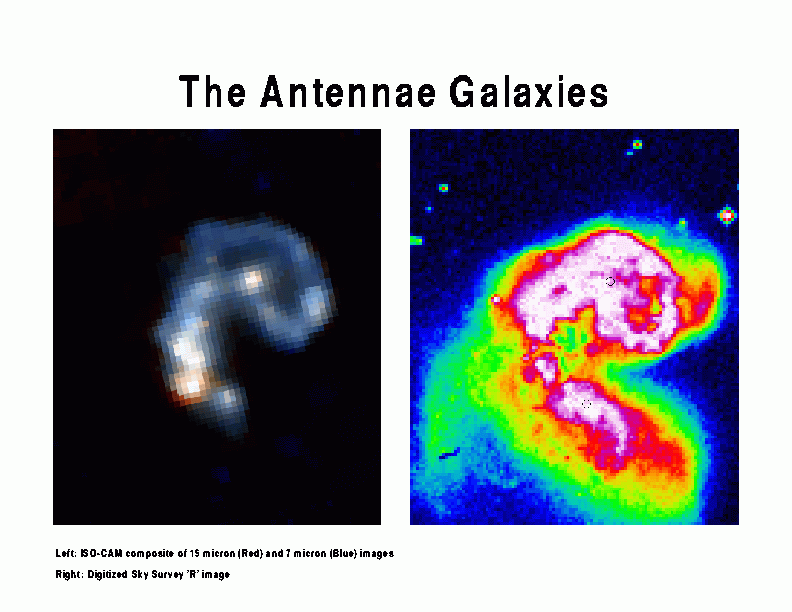
The Following text was taken from the ESA press release 14 February 1996
One target for ISO's Camera was a pair of galaxies known as the Antennae, 60 million light-years away. The name comes from antenna-like streamers of stars torn from the galaxies by a collision. The galaxies look quite similar by visible light. With its unprecedented ability to harvest and analyse infrared rays, ISO distinguishes different kinds of commotion provoked by the encounter.
To ISO's penetrating infrared eye, one of the Antennae galaxies shows a large ring of intense starmaking around the central nucleus. This feature is absent in the other galaxy. Another region of star formation extends along a line marking the overlap of the disks of the two galaxies, where the collision is fiercest. ISO's Camera has also observed merging galaxies 230 million light-years away, known as Arp 220. Here the intense infrared emission is concentrated in such a small region that astronomers suspect a possible interaction with a giant black hole.
Reference: "ISOCAM Observations of the Antennae Galaxies", Vigroux, L. et al.
INFRARED PROCESSING AND ANALYSIS CENTER